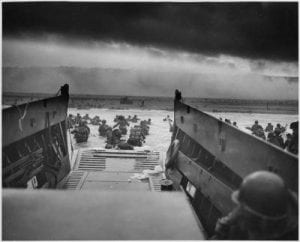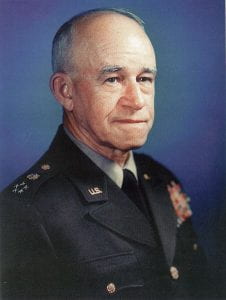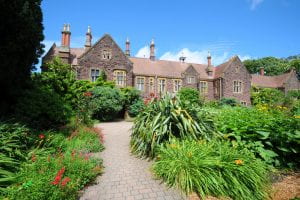By Andy Winfield
 This week the commemoration of the 75th anniversary of D-Day was observed in Northern France by veterans, world leaders and politicians. Even though the second world war was so long ago, its echoes still reverberate. The operation needed 156,000 troops with 73,000 from the US. So, in the lead up to the invasion, thousands of American GIs were stationed across the South West and many throughout the areas of Bristol. Huge amounts of the American war machine came into the country through the port of Bristol; as well as soldiers there were weaponry and supplies, including the exotic chewing gum and nylons which intrigued the locals all that time ago. There are interesting accounts of these times by Bristolians Delphine Higgs and Tom Fletcher who talk about the huge change in their lives over a short period of time after years of bombings and rations before these smart and wealthy soldiers arrived from across the sea. Bristol also played out the huge racial tensions from American life as black soldiers were able to mix with and drink in the same bars as anyone else here; this culminated in the Park Street riot of 15th July 1944.
This week the commemoration of the 75th anniversary of D-Day was observed in Northern France by veterans, world leaders and politicians. Even though the second world war was so long ago, its echoes still reverberate. The operation needed 156,000 troops with 73,000 from the US. So, in the lead up to the invasion, thousands of American GIs were stationed across the South West and many throughout the areas of Bristol. Huge amounts of the American war machine came into the country through the port of Bristol; as well as soldiers there were weaponry and supplies, including the exotic chewing gum and nylons which intrigued the locals all that time ago. There are interesting accounts of these times by Bristolians Delphine Higgs and Tom Fletcher who talk about the huge change in their lives over a short period of time after years of bombings and rations before these smart and wealthy soldiers arrived from across the sea. Bristol also played out the huge racial tensions from American life as black soldiers were able to mix with and drink in the same bars as anyone else here; this culminated in the Park Street riot of 15th July 1944.

As all of this was happening, the site of what is now the Botanic Garden became a hub with a large property (The Holmes) in the centre of the grounds turned into a home for American Generals for ten months, particularly General Omar Bradley. The Holmes was built in 1879 by William Edwards George, a wealthy brewery owner who rented it to the Baker family for 59 years and, after the death of Herbert Middleton Baker in 1943, the University of Bristol took on the rent and handed the house over to the American military. General Bradley was known as the soldier’s general as he was thought to have concern for his men; by the end of the war his 12th Army Group was the largest to be commanded by one man, over 1.3 million soldiers. As we’ve been developing the Garden over the last ten years we’ve unearthed a couple of GI buttons and we wonder the trouble they may have had from losing them, but maybe General Bradley would have been lenient.
From July to September in 1944 the Holmes became the residence of many US Army senior officers as the invasion approached and on one occasion General Eisenhower made an apearance; many of the rooms on the lower floor of the house are named after them. These include Generals Bradley, Hodges, Armistead, Patton, Rickard and Devers. The planning for D-Day happened mostly over at Clifton College, but just imagine the discussions that occurred in the rooms that now serve refreshments to Botanic Garden visitors. The main plans for D-Day were stored in an inconspicuous newly built warehouse in Brislington together with a stash of 20 million Francs in notes, its location only known by a handful of the top brass.

When the war was over Bristol University bought The Holmes and it has been used as student accommodation ever since, and of course in the last ten years has become the University Botanic Garden. If you visit the Garden you’ll see a commemorative display marking the short time that changed everything in our refreshments room (the Devers room), and consider over a cup of coffee how you’re sitting in a room where people had the fate of the largest human conflict on their minds… and then go and enjoy the plants!

